Pots, Pitchers, and Piercings
Browse the gallery of work shown at the 2007 American Association of Woodturners Symposium
“Unknown Asana” and “Red Teapot”
Art Liestman, Vancouver, B.C., Canada
Both pieces (see photo, right) are turned from maple burl and walnut. The handles and spouts are made from compwood, treated wood that’s extremely bendable. Liestman has made several of these teapots; these are the two most recent examples. The “Unknown Asana” mimics one of his signature pieces, an outsize jigsaw-puzzle piece. The “Red Teapot” uses many of the same colors as on the puzzle piece.
“Minoan Pitcher”
Tom Crabb, Richmond, Va.
This piece, made from a single piece of cherry, is similar to Minoan pottery dating from 800 B.C. Crabb began turning vessels in the shapes of ancient pottery in order to refine the proportions of his pieces. The pitcher is 8 in. tall and 6-1/2 in. in diameter
“Gathering Spirits”
Gary Bowes, Ottawa, Ontario, Canada
Spring in Eastern Canada inspired this piece. It shows “the spirits that come out of the ground and do a little dance,” Bowes says. He turned the pierced figures from hard-maple baseball bats. He bleached the wood, then turned the figures and cut them apart and pierced the turning.The trio is glued to a piece of maple burl that he dyed black.
“Liar Liar”
Gerrit Van Ness, Mount Vernon, Wash.
This piece reflects Van Ness’s “disgust with the overall divisiveness in this country.” He describes the piece as “whimsical with political content.” The base, made of Baltic birch, is a stylized dollar sign. The rest of the piece is made of maple, reinforced with fiberglass and epoxy. Reflecting current political divisions, the red hand is on the right and the blue hand on the left. Both are carved, as are the spouts and handles on the pot and kettle. Van Ness finished the base with three coats of high-quality car enamel; the pots are painted with flat and semigloss paint, and the hands are colored with aerosol enamel.
“Floral Fantasy”
Barrie Harding, Dunnellon, Fla.
Harding, who has been turning since he retired in 2000, has studied with Binh Pho and others who have mastered this style of pierced turning. “Floral Fantasy” consists of three parts, turned separately, finished with several coats of lacquer, and glued together at the base. The largest part is sycamore; the center section, sea grape; the top part, cedar. Harding says that sea grape not only works like cherry, it also darkens with age like cherry.
“Pitcher”
Jim Stout, Grants Pass, Ore.
An object from his childhood inspired Stout to make this turning. “My mother had an old pitcher that she used for lemonade and iced tea, and it was always around the house,” he says. “I made some sketches and decided I could make one like it in wood.” He turned the pitcher in madrone, a wood he likes to use, and attached a walnut handle. The pitcher is finished with walnut oil.
“Omei”
J. Paul Fennell, Scottsdale, Ariz.
Fennel adapted the design of the piercing from a book of Chinese screen designs published in the 1920s. The original design came from the Szechuan area, and the name of the piece is taken from a sacred mountain that’s home to a number of monasteries. Fennell says he spent three months working on the piece, modifying the two-dimensional screen to fit pleasingly on the three-dimensional form. He turned the vessel from mesquite, a wood that’s plentiful where he works and that is also very stable. He finished it with only one coat of Danish oil.
Photos: David Heim
Fine Woodworking Recommended Products
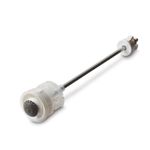
CrushGrind Pepper Mill Mechanism
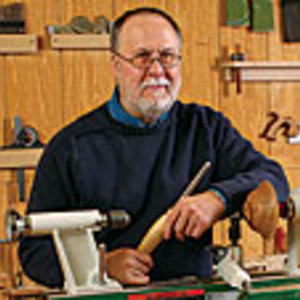

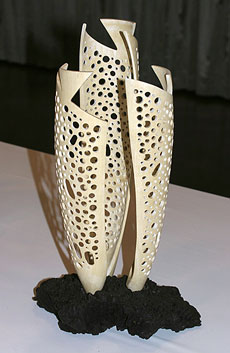

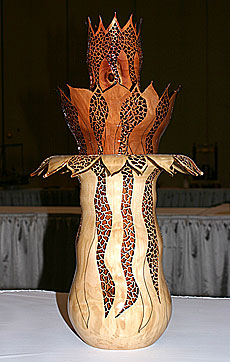
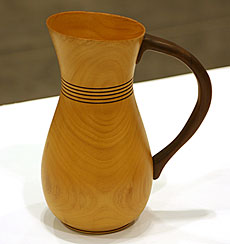
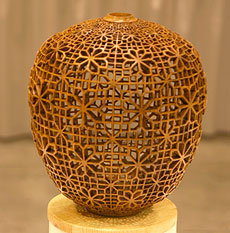


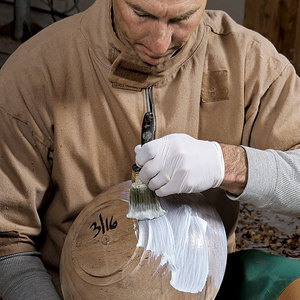

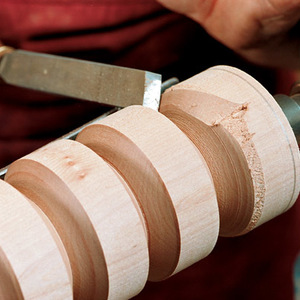
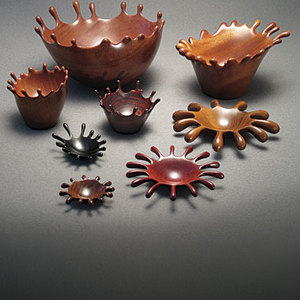





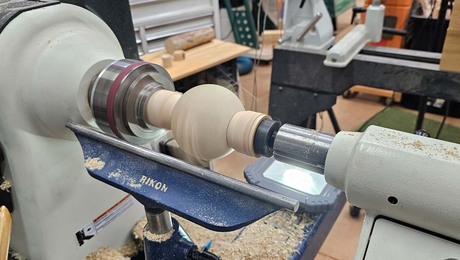









Log in or create an account to post a comment.
Sign up Log in